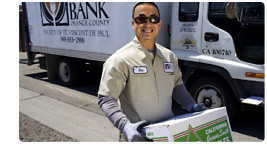Heading 2
Lorem ipsum dolor sit amet, consectetur adipisicing elit. Nostrum minus ea suscipit porro alias corporis libero at. Perferendis omnis, veniam nemo beatae vel? Tempora numquam a repellat eaque natus, magnam?
Heading 2
Lorem ipsum dolor sit amet, consectetur adipisicing elit. Autem ipsum mollitia neque, illum illo excepturi, eum incidunt fugit nostrum est, voluptate eaque minima corporis debitis at, dolores ipsam. Quaerat, dolores.
Heading 2
Lorem ipsum dolor sit amet, consectetur adipisicing elit. Autem ipsum mollitia neque, illum illo excepturi, eum incidunt fugit nostrum est, voluptate eaque minima corporis debitis at, dolores ipsam. Quaerat, dolores.
Heading 2
Lorem ipsum dolor sit amet, consectetur adipisicing elit. Autem ipsum mollitia neque, illum illo excepturi, eum incidunt fugit nostrum est, voluptate eaque minima corporis debitis at, dolores ipsam. Quaerat, dolores.
Heading 2
Lorem ipsum dolor sit amet, consectetur adipisicing elit. Autem ipsum mollitia neque, illum illo excepturi, eum incidunt fugit nostrum est, voluptate eaque minima corporis debitis at, dolores ipsam. Quaerat, dolores.
The City of Los Angeles today passed the framework of a carryout bag ordinance – opting to pursue a model that more closely mirrors action in other California localities and largely comports with CGA’s Board-approved carryout bag regulation policy.
Specifically, Council directed the Bureau of Sanitation to begin work drafting an ordinance that will ban plastic single-use carryout bags and mandate a nominal charge for paper. The action came after months of heavy lobbying by CGA to redirect the Council from a proposal that would have banned distribution of all single-use carryout bags by grocers in the City.
During debate, CGA was identified as a key partner in forging the compromise. CGA was the only business entity to testify with proponents, noting that the direction Council opted for is something the industry as a whole is comfortable with. In particular, the regulation of both bag types was highlighted as critical to providing consistency for consumers across the region and minimizing cost and operational impacts to LA City grocers. Several nearby localities, including the County of Los Angeles and the City of Calabasas, have passed bag ordinances that include a mandated charge on paper.
Over the next few months, CGA will continue work as details of the proposed ordinance are drafted.
- The Los Angeles Times – Ban on Plastic Bags at L.A. Markets Is Approved



